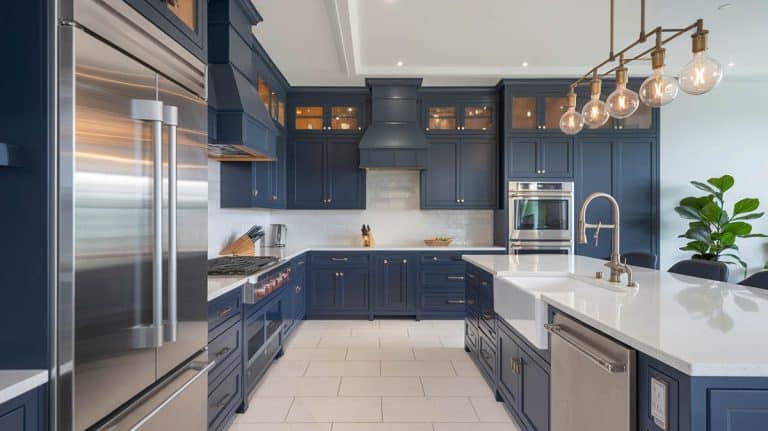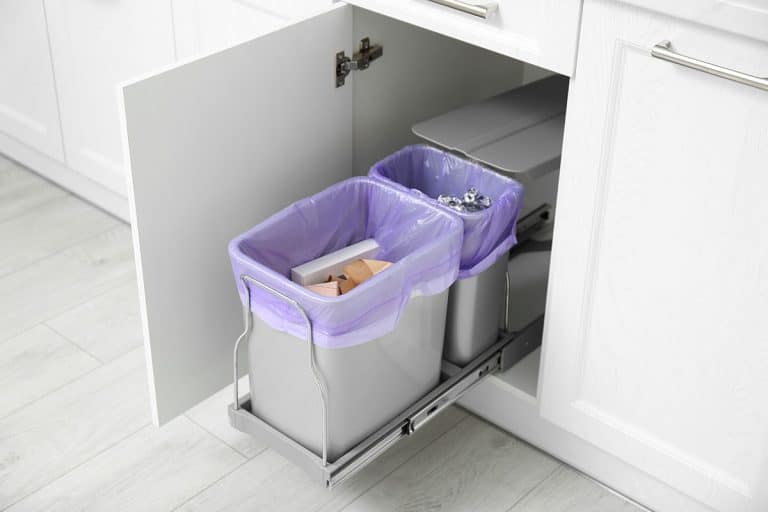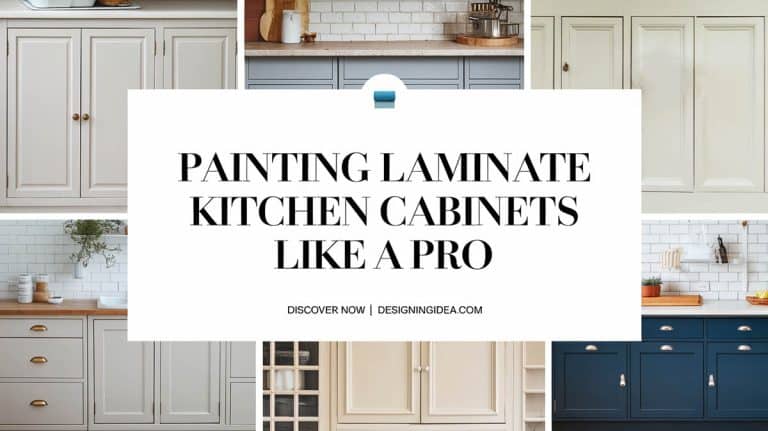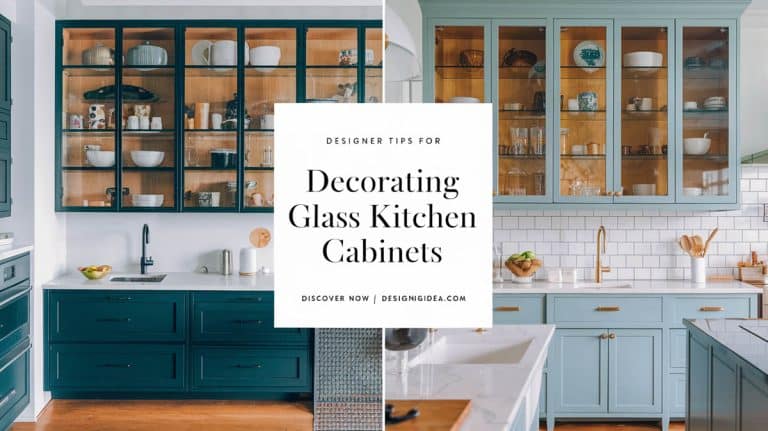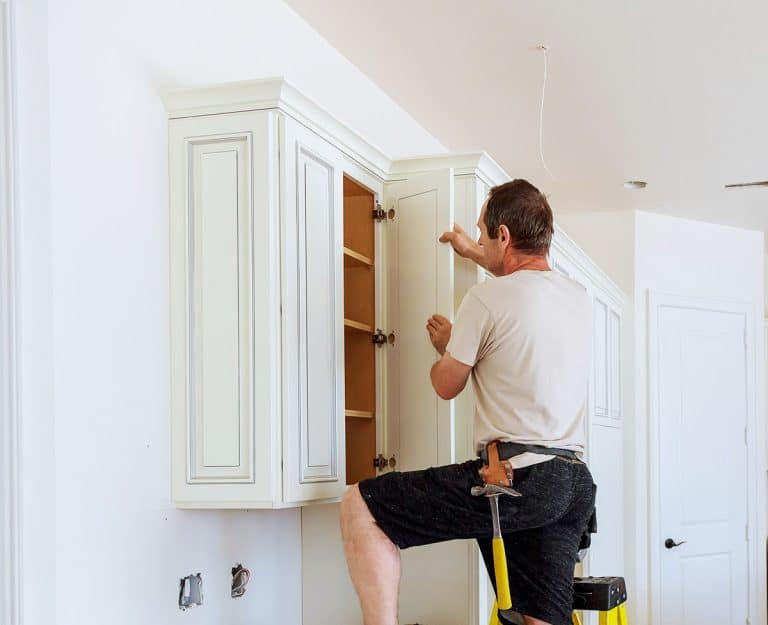What Makes Espresso Kitchen Cabinets a Popular Choice for Homeowners?

Espresso kitchen cabinets have become the sophisticated choice for creating a dramatic yet timeless kitchen space. With their deep, dark color mimicking freshly brewed coffee and versatile styling, it’s no wonder these cabinets are surging in popularity for modern homes. So, what are all the elements that makes espresso cabinets such a popular choice?
(Images generated using AI to showcase potential design ideas.)Why Choose Espresso Cabinets?
More Than Just Dark Brown – Espresso is a specific neutral black-brown tone, unlike other dark finishes like java (slightly darker) or dark walnut (with red undertones). This near-black color creates a contemporary, sleek look while maintaining warmth and versatility.
The Versatility of Espresso – The deep espresso color serves as a rich base which allows other accent colors to pop. Espresso cabinets pair beautifully with lighter granite countertops, stainless steel appliances, or vibrant mosaic backsplashes. The neutral tone allows you to change accessories over time without clashing.
Dramatic Yet Classic – While the espresso color is bold, the classic cabinet styling ensures it functions as a timeless backdrop in your kitchen. Shaker-style doors and sleek handles prevent the look from feeling too avant-garde. The richness of real wood grain peeking through the espresso finish adds organic depth.
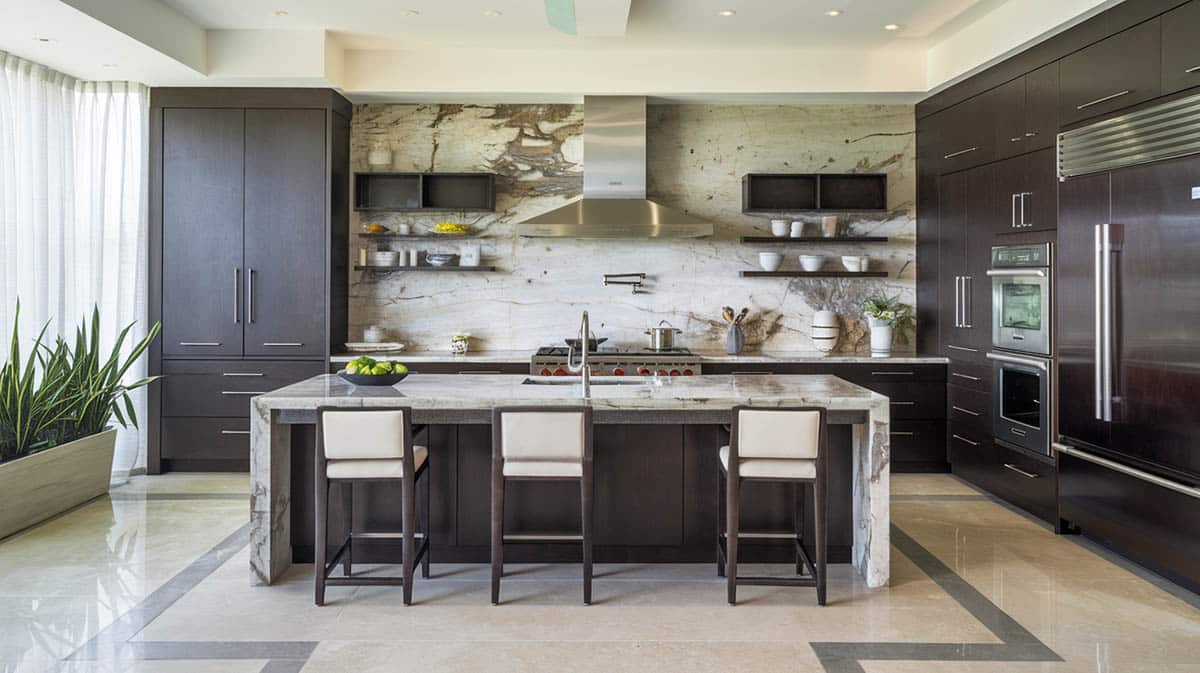
Can Be Crafted From A Variety Of Materials – Crafted from materials like maple, cherry, MDF, thermofoil or laminate, espresso cabinets bring a sleek, modern look that instantly classes up a kitchen.
Hides Imperfections – These options do a fantastic job of hiding minor flaws – we’re talking small scratches, wear patterns, food splatters. You’d be amazed at how much an espresso finish can disguise! This makes them ideal for families and those wanting a low-maintenance, yet stylish option. It’s no wonder real estate agents praise darker finishes for increasing perceived home value!
Brings In the Warmth You Want – The dark color also lends your kitchen a moody, upscale vibe while making accent pieces really pop. It brings a warmth and coziness to larger, open concept kitchens in particular.
Which Kitchen Styles Work Best With Espresso Cabinets?
To give you an idea of how this cabinetry color works with different styles, we’ve created a gallery of kitchen designs. Some styles work better than other with rich, dark espresso cabinetry. Here’s our list of the best options to use.
Contemporary
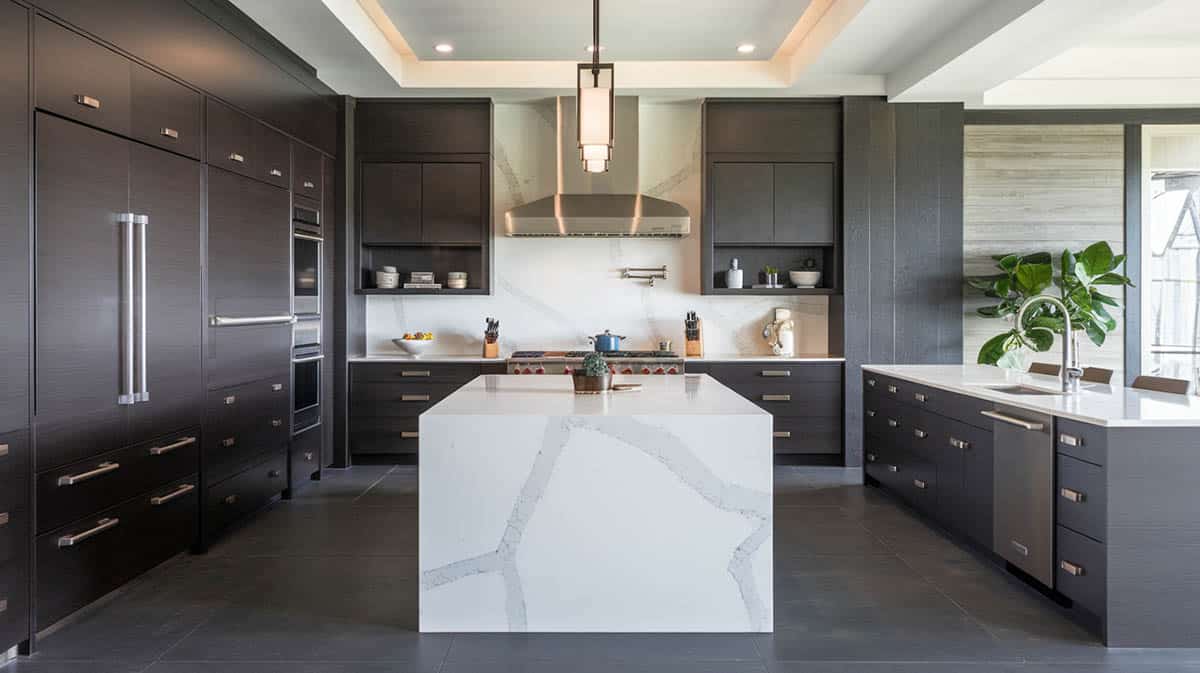
Espresso cabinets lend themselves beautifully to a variety of contemporary kitchen aesthetics. With their rich, dark color and sharp, clean lines, espresso cabinets make a dramatic statement in modern spaces featuring minimal ornamentation. The deep hue and architectural styling evoke an appealing warmth and complexity.
Industrial

Industrial design enthusiasts will also find much to love in espresso cabinetry. The dark color palette and structured look perfectly complement metal finishes and exposed structural elements common in industrial decor. Espresso cabinets add stylish polish while preserving the rugged warehouse aesthetic.
Minimalist
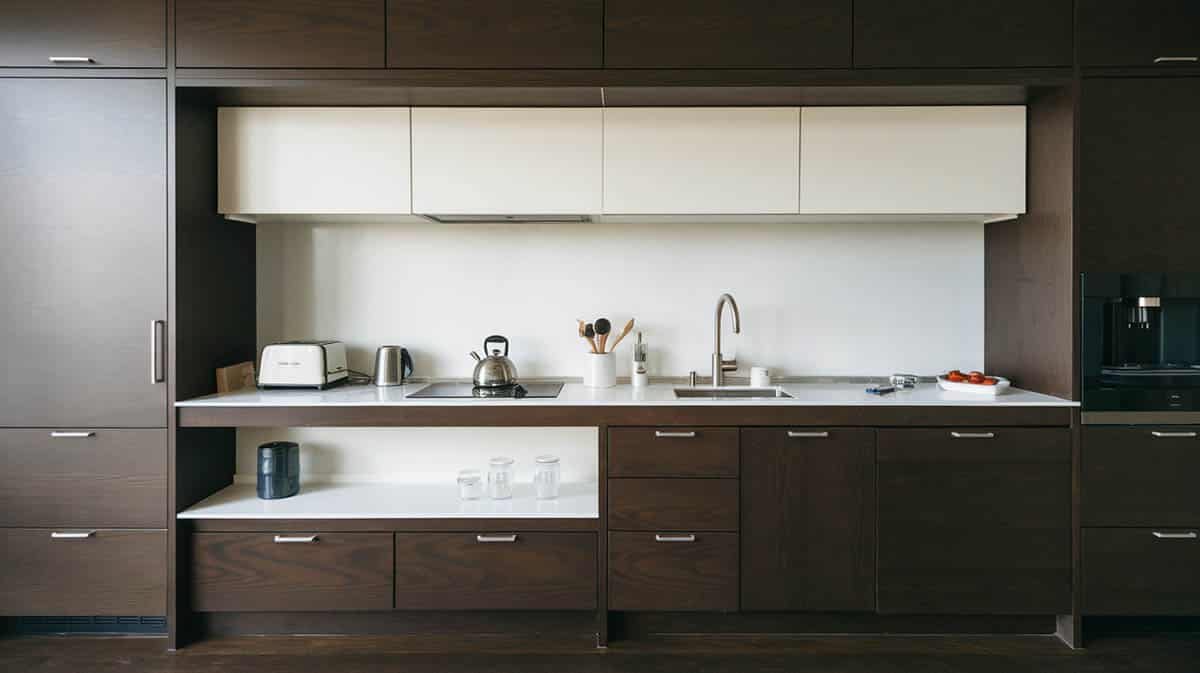
Those favoring a pared-down minimalist vision need look no further than espresso cabinets to create interest and depth. The intense, saturated tone and intricate wood grain patterns deliver artistic impact without any unnecessary embellishments. Crisp espresso cabinetry brings a captivating focal point to otherwise sparse spaces.
Transitional

This style skillfully blends the two types, contemporary and traditional, incorporating modern materials like quartz countertops and subway tile with more classic elements like raised panel doors. Mixed metals and neutral accents allow the espresso cabinets to stand out.
Mediterranean and Tuscan
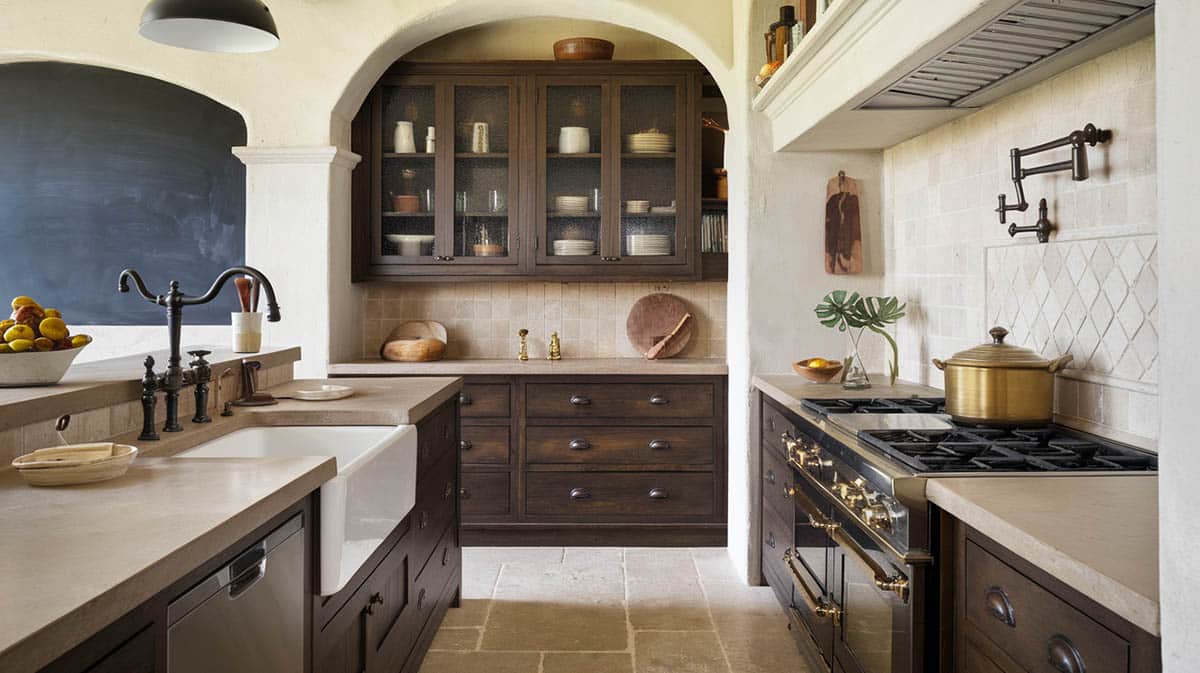
The colors often used with these earthy styles also complement the dark wood tones with terracotta floors, textured walls, wrought iron fixtures, and natural stone textures. The color palette is kept warm and inviting.
Asian-inspired
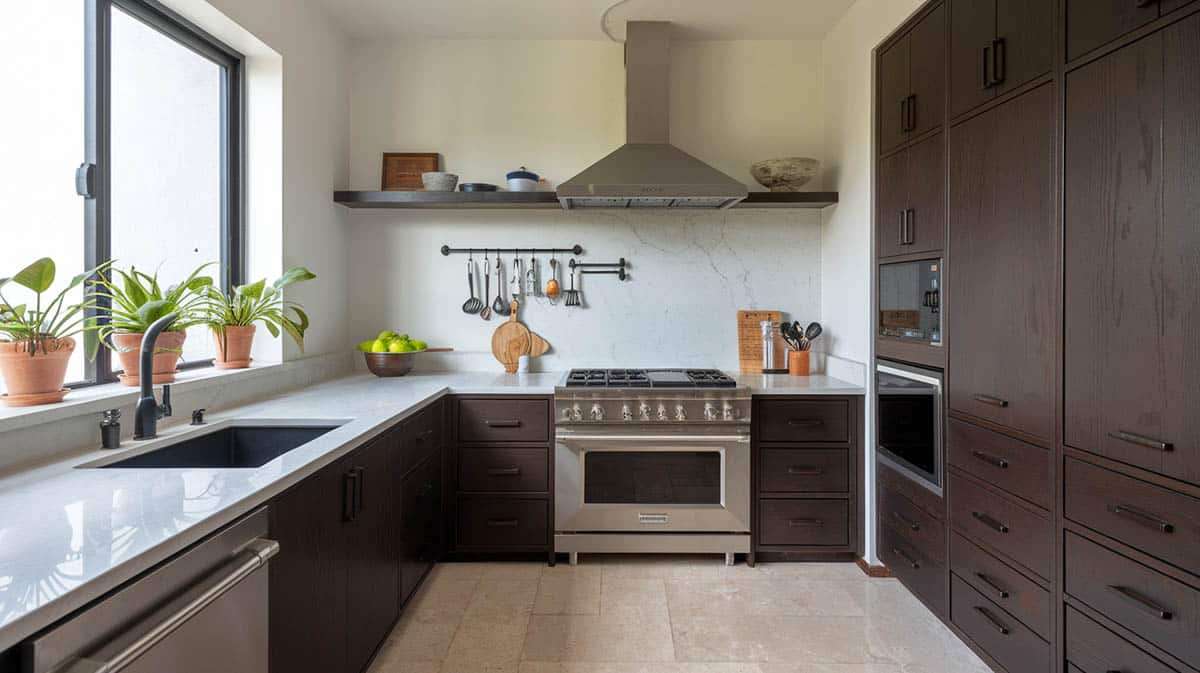
For a cleaner modern feel, Asian-inspired motifs use espresso cabinets as a sophisticated base for bamboo accents and minimalist, zen décor focused on harmony. The rich color acts as an elegant backdrop.
Traditional
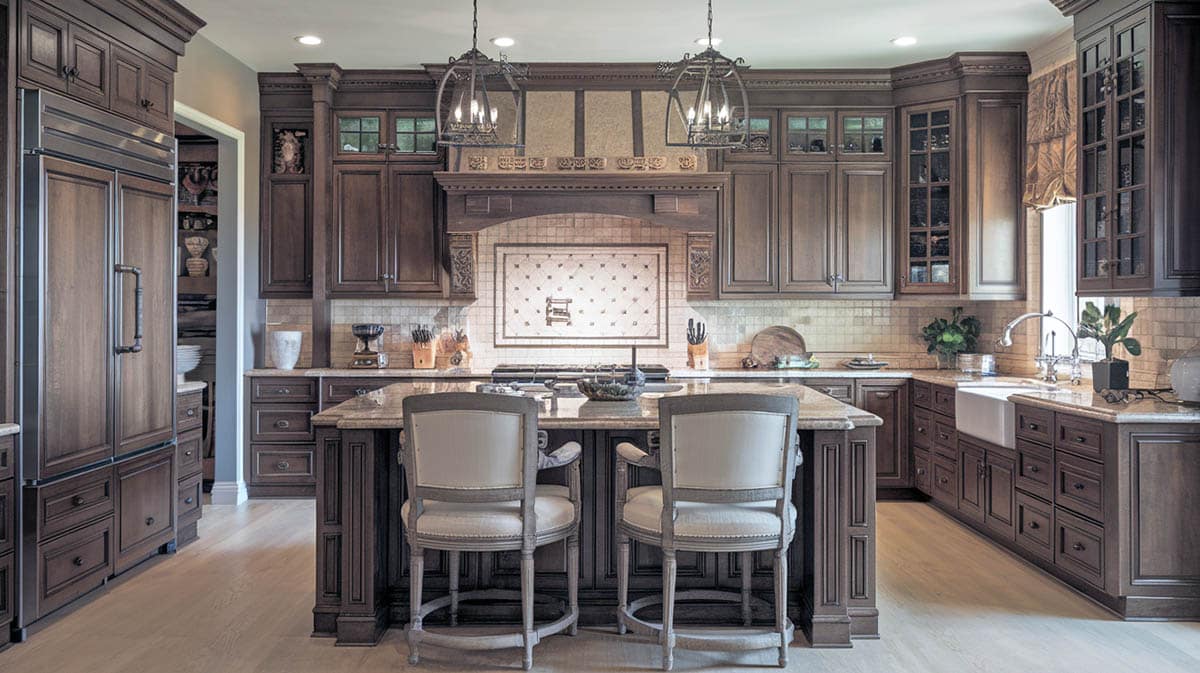
More traditional rooms embrace ornate crown moldings, elegant granite patterns, and lavish textiles. The espresso anchors the space with timeless beauty.
Modern Farmhouse
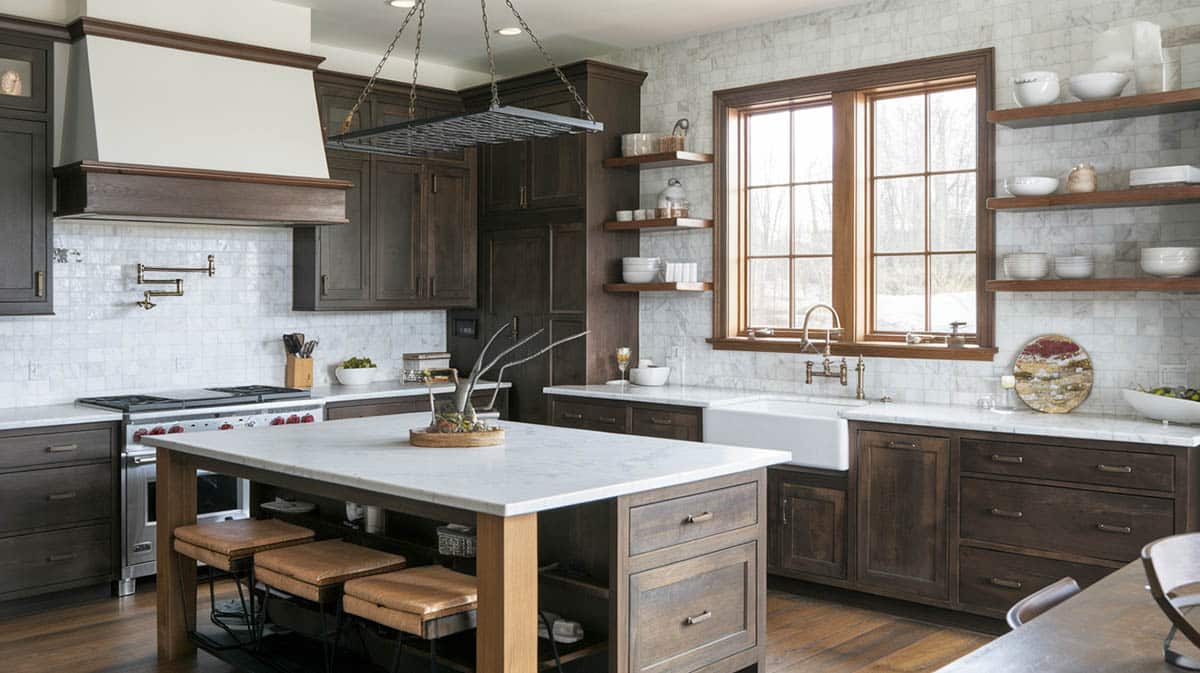
These interiors offer lighter contrasts like crisp white counters and backsplashes next to the dramatic espresso. Natural woods and artisan hardware add to the rustic charm.
How to Design A Kitchen With Espresso-toned Cabinetry
Incorporating the dark, moody hue from these cabinets effectively into your design involves some finesse. The secret lies in using deliberate color pairings to create striking contrast around your espresso cabinets.
Direct the Eye Upwards with Lighter Countertops – Choose light-colored countertop materials to play up the dramatic distinction of your dark lower cabinets. Crisp white quartz and marble create bold visual separation for a more contemporary look. For softer contrast, try subtle yet lively granite patterns in pale tan and gray. Butcher block countertops also introduce natural visual interest with their linear grain patterns in honey or blond wood tones. The lighter counter surface draws the eye upwards and keeps the space feeling open and bright.
Use Wall Colors to Set the Mood – Surrounding wall color has a significant impact on the feeling of your espresso kitchen. Soft beige or cream walls establish a warm, inviting backdrop for the cabinets to stand out against. Cool gray walls elicit a more sleek, modern personality. Opt for crisp white walls and trim to maximize the visual pop of your espresso cabinets through extreme contrast. Remember that small variations in wall color can shift the entire mood of your kitchen design.
Selecting Backsplash Options – The details make all the difference in creating a space that feels refined yet inviting. Take the backsplash, for example – a simple light subway tile adds nice contrast against the dark cabinetry, giving the space a touch of classic charm. For more texture, natural stone tiles come in earthy tones that beautifully coordinate while providing visual depth. Or make a statement by introducing pops of color with lively glass tile mosaics reflecting light. These elements will all help temper the richness of the browns to help things from feeling too heavy.
Hardware Selection Also Deserves Attention – Sleek brushed nickel or shiny chrome knobs and pulls would provide modern punctuation against the traditional espresso color. Aging brass and oil-rubbed bronze finishes lend an old world, handcrafted look. For serene elegance, the luxury of gold hardware pairs nicely with espresso, warming up the tones of the space. Mixing up knobs and handles provides needed individuality.
Designing With Space Considerations
Small Kitchens – Those with a small kitchen need to take care not to make the space feel overly dark or closed in. Strategically using glass-front cabinets can help reflect light while also providing a view of displayed items. Using open shelving into the design is another smart choice for opening up petite kitchens. Go ahead and bring in some espresso cabinets or accent pieces, just balance them out with lighter elements so the room doesn’t feel swallowed up.
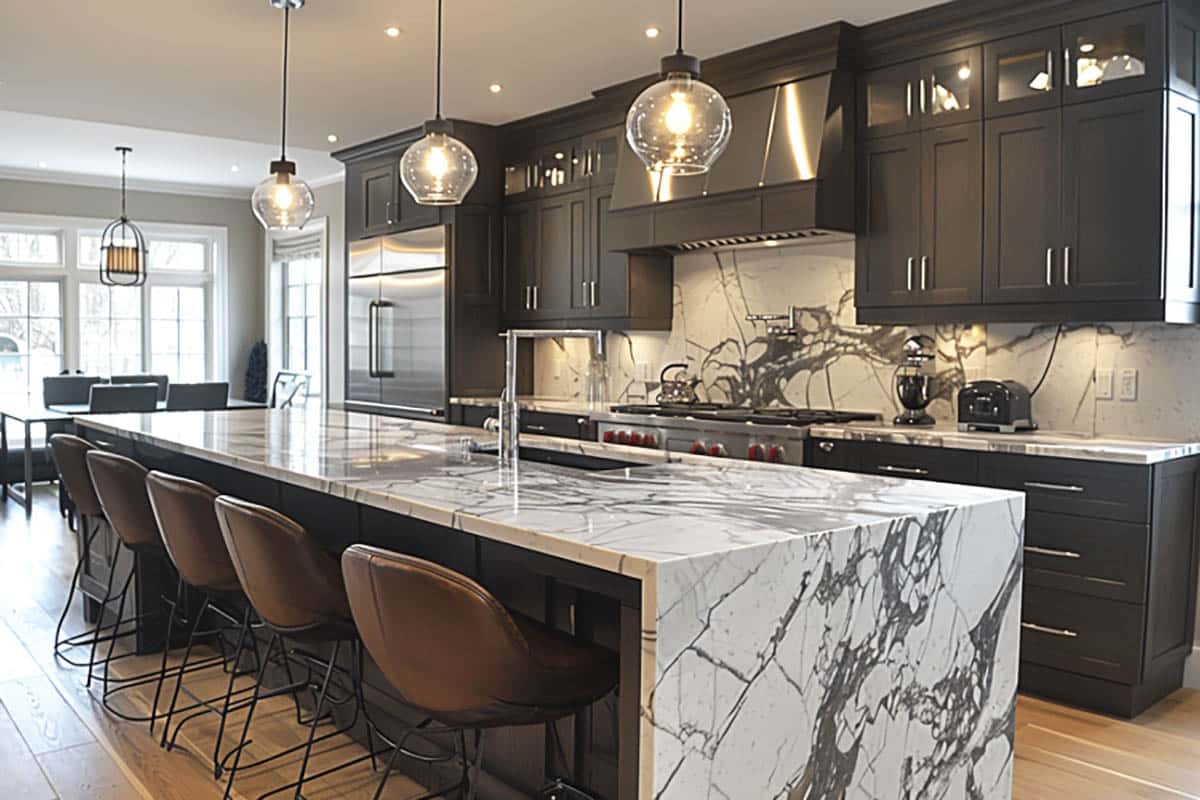
Large Kitchens – Now for you lucky folks working with a spacious kitchen, you’ve got lots of fun options to play around with! Consider using a two-tone scheme, like espresso base cabinets with lighter uppers, or creating a focal point island with rich espresso cabinets. Use them in selective areas to define distinct zones in an open concept kitchen. You can also make a bold statement by building out a decorative hood surround in a dark espresso finish.
Balancing Dark Cabinets – No matter the kitchen size, it’s important to ensure sufficient light and visual balance when incorporating espresso cabinets. Stick to lighter countertops and backsplash materials to prevent too much darkness from accumulating.
Metallic or glass backsplashes can reflect light beautifully. You also may want to introduce some warm wood tones in the space through flooring, bar stools or open shelving. The key is not to let the espresso cabinets overwhelm the whole aesthetic. Use them thoughtfully, creatively and play with lighter accents throughout the rest of the kitchen. This will let your dramatic cabinets shine while preventing things from feeling gloomy or visually heavy.
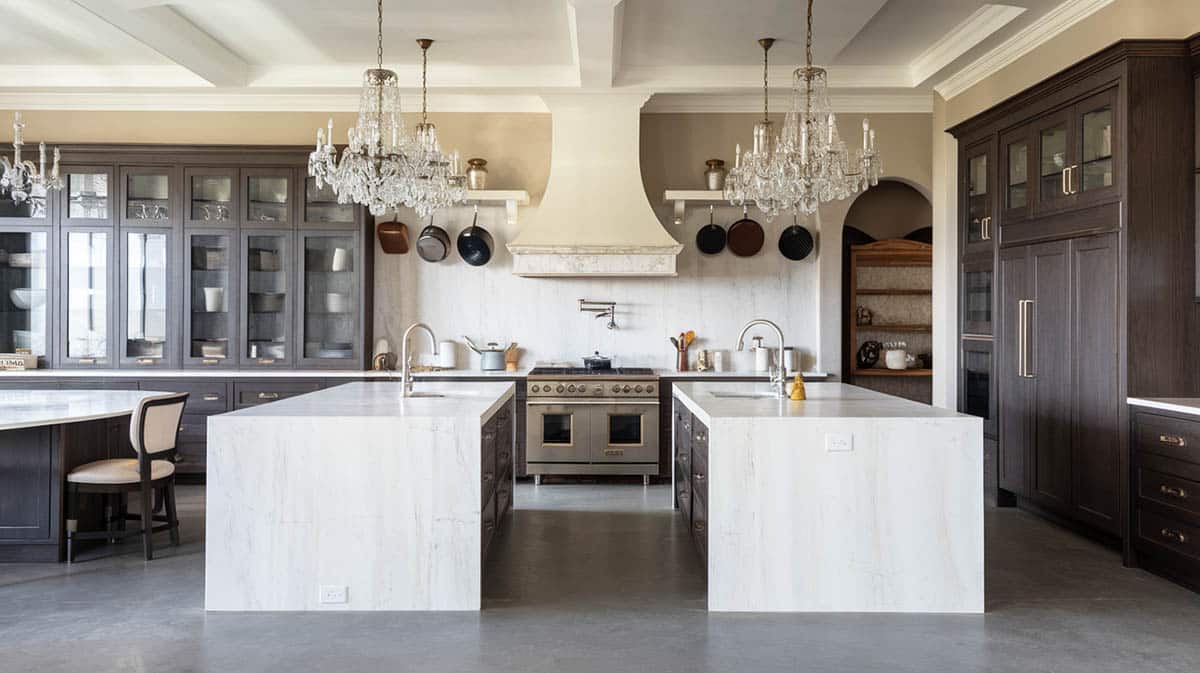
Lighting Options For Darker Cabinets
Without enough brightness to offset those deep, dark tones, things can start to feel a little…well, cave-like. Start underneath your upper cabinets. Installing skinny LED strip lights along the underside ensures your countertops and work zones get illuminated properly. Just be sure to go for a “daylight” colored light rather than warm white to keep things feeling bright and vibrant.
Overhead is key too – especially in areas like islands or dining nooks tucked in a kitchen corner. Pendant lights centered precisely over these spaces cast a perfect cone of light right where you need it most. And when it comes to windows, go minimalist with your coverings. Unobstructed daylight streaming into your kitchen will make the space feel airier and less closed-in.
Lastly, pay attention to where you place any recessed ceiling lights. Position them thoughtfully to prevent the creation of any harsh shadows – for example on the wall behind the kitchen sink or on the underside of upper cabinets.
Set the Overall Brightness Level – For darker cabinetry like this, aim for 90-100 lumens per square foot. For example, a 200 square foot kitchen needs 18,000-20,000 total lumens. This 20-30% boost over standard guidelines compensates for the light-absorbing properties of the dark wood finish.
Install Task Lighting Where It Matters Most – Under-cabinet lighting is crucial for fully revealing deep espresso tones. For dark cabinets, install high-output LED strip lighting or puck lights providing 600-800 lumens per linear foot. Position these 2700K-3000K lights to graze the cabinets’ undersides.
Over key work zones like countertops and sinks, focus bright task lighting. Dedicate 1200-1500 lumens over each sink and 1000-1200 lumens per work surface area. For the cooking area, install lights emitting a robust 2000-2400 total lumens.
Add Pendants to Draw the Eye Upward – Give visual prominence to a kitchen island or peninsula with pendant ceiling lights. Over a 6-foot span, hang 2-3 pendants supplying a combined 3000-6000 lumens. Suspend these lights 30-36 inches above the counter to splendidly exhibit espresso’s sleek linear grain.
Enhance Ambience with Recessed Fixtures – Recessed ceiling lights shape ambient room lighting. Space 6” recessed fixtures emitting 800-1200 lumens every 4-6 feet. Place them 24-30 inches from upper cabinets to avoid glare and shadows. Let recessed lighting account for 40% of total kitchen lumens.
What To Avoid When Using Espresso For The Cabinets – When designing it’s tempting to get carried away with dramatic elements like dark cabinets paired with a bold wall color, ornate oven hood, or oversized hardware. But too much of a bold look can overwhelm a small space. Take a balanced approach to create a kitchen that truly feels like you.
Lighting sets the mood for the whole room – make sure to install sufficient task lighting over key areas like the countertop and sink. Don’t be afraid to incorporate some striking contrasts in your cabinetry or backsplash, but use neutral transition pieces to keep the look cohesive. Dark colors have a powerful impact – use them sparingly as accents to avoid closing in the space. And pass on massive knobs or pulls that dominate tiny cabinet fronts, opting for hardware sized in proportion.
Use lighter colors for the countertops, backsplash, walls and flooring to offset the dark cabinetry. To avoid going overboard with dark lowers and upper units you can choose upper cupboards with glass-front doors.
To help brighten up a space, use two-tone cabinetry with espresso lowers and light-color upper units. The dark brown lowers combined with crisp white uppers look stunning, especially when designed in a contemporary or modern style.
Finally, remember to give the eye a break once in awhile. Break up lines of cabinetry with an open shelf, window valance or change in cabinet style. These moments of visual relief make the dramatic aspects shine without going overboard. With some restraint and purposeful balance, your new espresso kitchen will feel pulled together rather than chaotic.
Espresso cabinets lets you achieve a dramatic, contemporary kitchen space with timeless appeal. Their versatility to match various styles makes them an increasingly popular foundation piece. Tell us what you think below in the comments.

